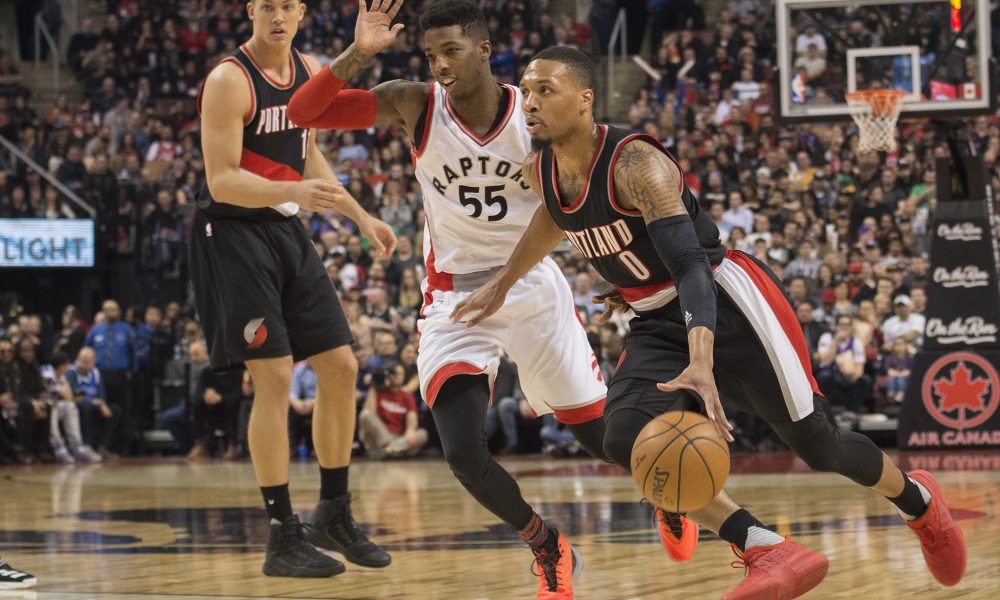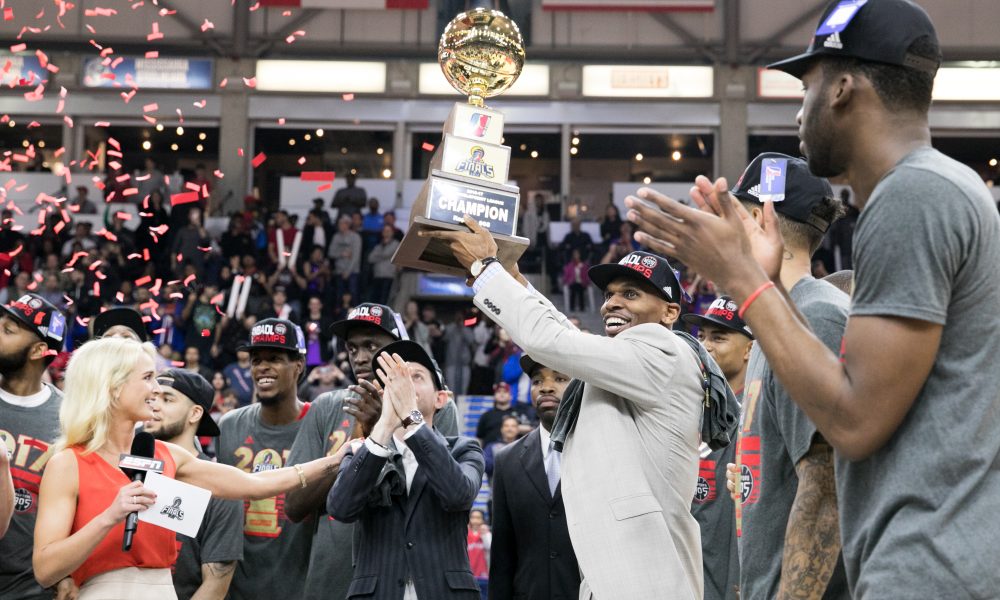In order to determine what to expect from Pascal Siakam this upcoming season, we first have to figure out what the hell Siakam was as a rookie last year. Without question, Siakam is an impressive athlete, standing 6’9” with a thin, mobile frame, and an engulfing, Bucks-esque wingspan:

Juan Labreche/Associated Press
Thrown into the fire as a starter, Siakam was inarguably overmatched. Lineups in which he played were consistently the Raptors’ worst groups, and Siakam was a bit of a mess on both sides of the ball. He was reverse-Biyombo on defense, twitchy in all the wrongs ways, hyperactive, and often a step too early on rotations. He stepped out towards a driver before the rotation behind him caught up to his man, or he’d leave his feet jumping out at a shooter. Here he is hurling his body, shaking rhythmically left and right like a master salsa dancer, at a Kevin Love pump fake:
For a rookie, effort is a good problem to have. He’s young, and he’ll get smarter with more reps. Some of the mistakes he made are things other defenders can only hope to be able to do, covering wide stretches of the floor in a quick move and possessing the athleticism to at least try to recover if out of position. Rookies are usually bad, and defense takes time to turn potential and effort into impact.
On offense, Siakam showed little more than a knack for running the floor and offensive rebounding (again, really important skills to have, especially as they are difficult to develop). However, his jump shot was mechanical and slow, his passing vision late, and his handle loose. Despite these flaws, Siakam projects to be an important piece for the Raptors in the future. Why? The Raptors 905.
FURTHER READING: Raptors’ Pascal Siakam, Jakob Poeltl lean on friendship in contrasting rookie seasons
For those who weren’t watching (which is almost everyone), Siakam dominated during his brief stint as a 905er. On offense, he baffled defenders with his moves around the rim, finished with touch, and even showed the ability to drain jumpers and floaters from the paint. Siakam even won playoff MVP for the champion 905. He also turned in a handful of terrific games at Las Vegas Summer League. How much of Siakam’s supremacy was due to his ability to finish over smaller, less athletic defenders? If you’ve been watching 2017-18 preseason, you can see a microcosm of Siakam’s rookie season thus far during games: He struggles against starters, but he’s able to accumulate stats and highlights in a hurry against second- and third-string opponents.
That begs the question as to whether Siakam got better while playing in the G-League. Both the numbers and the tape seem to bear out that he did. Importantly, during the second act of the season, Siakam greatly improved his plus/minus per-100 possessions, which at one point hit a low of -11.3 before his demotion to the 905. Those are small, noisy samples, but it speaks to not only his improvements but his fit in a more natural role for a young, developing player.
With the 905, Siakam returned to his originally planned role when the Raptors drafted him: Project. He was never supposed to be a starter out of the gate, but the Jared Sullinger injury early in the 2016-17 year forced Siakam into a position for which he was unprepared. One the 905, he was able to develop the more raw skills in his arsenal without worrying about his plus/minus for a playoff-bound Raptors squad. And he did improve. Watch his timing on these blocks he accumulated in just one 905 game:
Siakam timed these blocks well, rotating properly, and not leaving his feet early. The G-League game is slowed down, and Siakam was much more comfortable with the pace as a 905er. While it will most likely be too much to ask Siakam to be just as comfortable this season in much faster NBA games, he should slowly adapt to the quicker pace, increasingly getting the knack of timing on both sides of the ball, until he is as patient as a finely tuned jazz drummer, or Anthony Davis, or both.
Don’t expect to see Siakam put up his 905 stats of 18+ points and 7+ rebounds per game (obviously), but also don’t be surprised to see Siakam contribute to the Raptors in other ways this year. His numbers likely won’t improve from his Raptors’ numbers last year (4.2 pts, 3.4 reb, and 0.8 blks), but that isn’t the point. Look instead at Siakam’s plus/minus, which was a horrific -3.0 per 100 possessions (worst on the Raptors other than Sullinger) in 2016-17, and look at how he fits into what will likely be a sizable role in the second unit.
Siakam acknowledges that his role on the Raptors this year will be different, and his leash will be tighter: “I think the rookie days and all that…[are] over.” Barring injury, Siakam will certainly not start, with Serge Ibaka and Jonas Valanciunas entrenched as bigs in front of him. But Siakam can contribute.
Siakam can block shots, rebound, run, and finish in transition. He could be part of a useful, up-tempo bench mob headed by Kyle Lowry and perhaps Ibaka-at-center. If Siakam’s +/- per-100 possessions can creep into the neutral or even positive range on the season, then consider the 2017-18 campaign a successful development year for the still-developing sophomore. In terms of specific skills, Siakam will have made headway by this time next year if some of the passing chops he showed with the 905 translate to the Raptors or if he raises his corner 3-point percentage to league average levels. Perhaps his handle will tighten, too.
The best-case scenario is that Siakam earns – instead of is pressed into – 10-15 minutes at both big spots and contributes positive minutes off the bench. The worst-case scenario is that Siakam does not play much for the parent squad, again proves entirely too talented for the G-League, and develops incrementally. Both scenarios are possible, and both involve the Raptors’ bench improving, which is a good thing no matter which way you slice it.



